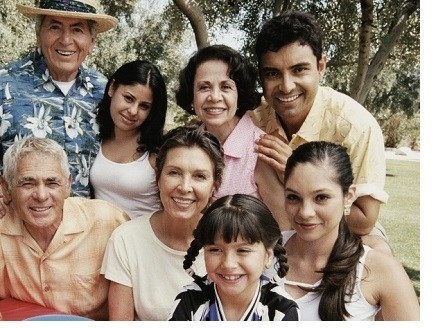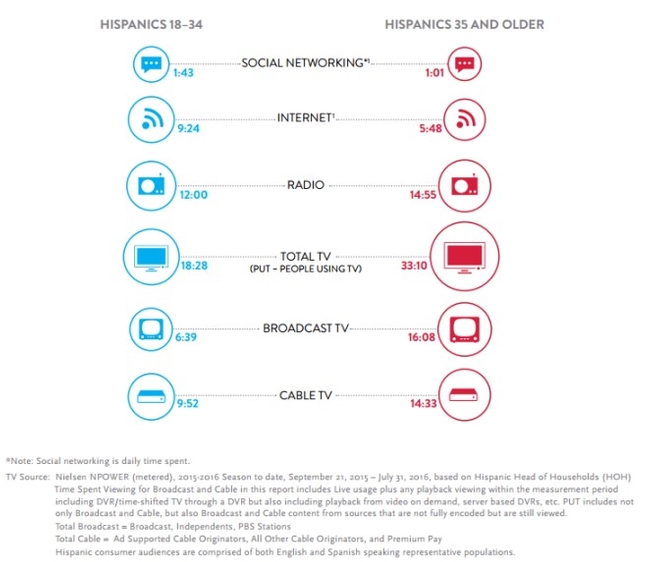Growing gap between younger and older Hispanics

Younger Hispanics have very different media preferences than their grandparents and even their parents. They have their own unique language preference. And they're much more educated.
This has over time shaped a unique demographic group that advertisers should be courting quite differently than the older one.
A new report from Nielsen takes an in-depth look at the Hispanic demographic, in which these growing differences emerge.
It's a fascinating portrait of a group that will account for “virtually all (93 percent) of the growth of the nation's working-age population between now and 2050.”
Right now there are nearly 57 million U.S. Hispanics. By 2020 that number will balloon to 119 million, or just 60 million shy of the number of non-Hispanic whites, who are on the decline.
Here's a look at three areas where the differences between younger and older Hispanics are most stark.
Language
Language is an age-old struggle for those targeting Hispanics. For years previous to 2000, much of the U.S. Hispanic population were immigrants, and they spoke Spanish, the language of their native country, usually Mexico.
But the vast majority of American Hispanics are now born in this country, and that's led to a language divide.
Nielsen says that among adults 55 and over, 35 percent are Spanish-dominant, compared to a mere 4 percent of those under 18, and 14 percent of Millennials.
It's not just Spanish where the differences come, though. Less than half of 55-and-overs are bilingual, while 58 percent of those under 34 speak both languages.
The takeaway: This gap will continue to grow with greater assimilation and as fewer kids grow up in homes with foreign-born Hispanics.
Media
This is the area where young and old most differ. Hispanic Millennials are voracious consumers of new media. For example, 91 percent use social media compared to 64 percent of those over 35.
Interestingly, young Hispanics' media device ownership closely mimics non-Hispanics rather than Hispanics over 35. So, for instance, 88 percent of Hispanic Millennials have smartphones compared to 86 percent of non-Hispanics and 68 percent of Hispanics over 35.
And there are vast difference between consumption of traditional media such as cable and broadcast, as detailed in the chart below.
The takeaway: When targeting this demographic, it's important to do it by age group to determine which media to use.
Education
Young Hispanics are more educated than their older counterparts, and becoming more so every year.
Sixty-seven percent of Hispanic high school graduates enrolled in college from 2012 to 2014.
“The number of 18-to-24-year-old Hispanics enrolled in a two- or four-year college more than tripled between 1993 and 2013: 2.2 million Hispanics enrolled in 2013 versus 728,000 in 1993. That trend has made Hispanics the largest diversity group on U.S. college campuses,” Nielsen notes.
There are more Hispanics to seek out these opportunities, for sure, but the growth is still stunning.
The takeaway: This will result in a more affluent Hispanic demographic going forward. Already, the number of Hispanic households making $100,000 annually has more than doubled from 2000 to 2014.
This article is part of an ongoing Media Life series entitled “Catching the next big wave: Hispanic media.” You can read previous stories by clicking here
Source: Published originally on medialifemagazine.com as Growing gap between younger and older Hispanics, by the editors of Media Life, September 1, 2016
